JVCKENWOOD 475400 VHF DIGITAL TRANSCEIVER User Manual
JVC KENWOOD Corporation VHF DIGITAL TRANSCEIVER Users Manual
Users Manual
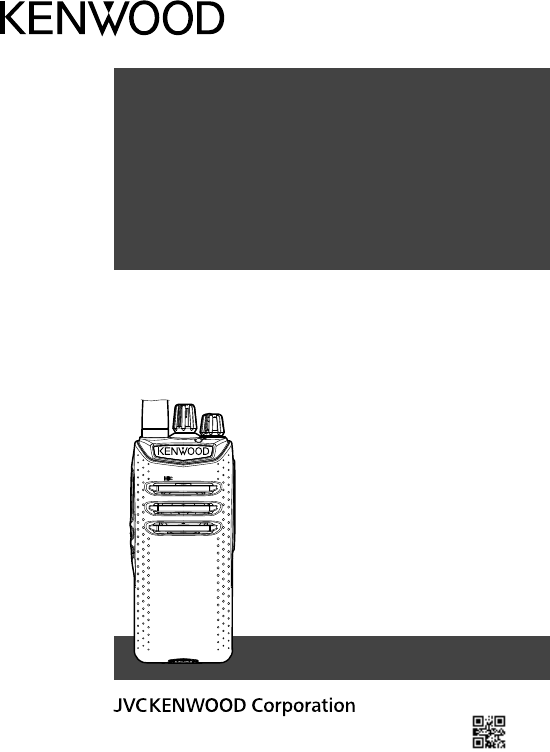
USER GUIDE
GUIDE DE L'UTILISATEUR
GUÍA DEL USUARIO
TK-D240
TK-D240V
TK-D340
TK-D340U
B5A-0929-00 (K)

VHF DIGITAL TRANSCEIVER
TK-D240
UHF DIGITAL TRANSCEIVER
TK-D340
USER GUIDE
This User Guide covers only the basic
operations of your radio. Ask your dealer for
information on any customized features they
may have added to your radio. For using details
instruction manual (User Manual), refer to the
following URL.
http://manual2.jvckenwood.com/en_contents/search/

2
THANK YOU
We are grateful you have chosen KENWOOD for your Digital
Transceiver applications.
CONTENTS
NOTICES TO THE USER.................................................. 3
PRECAUTIONS .............................................................................. 5
UNPACKING AND CHECKING EQUIPMENT ...........................10
SUPPLIED ACCESSORIES .......................................................... 10
PREPARATION ...........................................................11
INSTALLING THE CHANNEL STOPPER ....................................... 11
INSTALLING/ REMOVING THE BATTERY PACK .......................... 12
CHARGING THE BATTERY PACK ................................................. 13
INSTALLING THE ANTENNA ....................................................... 14
INSTALLING THE BELT CLIP ....................................................... 14
INSTALLING THE CAP OVER THE SPEAKER/ MICROPHONE
JACKS ......................................................................................... 15
ORIENTATION ............................................................16
BASIC OPERATIONS .................................................... 17
SWITCHING POWER ON/OFF ...................................................... 17
ADJUSTING THE VOLUME .......................................................... 17
SELECTING A ZONE AND CHANNEL ........................................... 17
TRANSMITTING .......................................................................... 17
RECEIVING.................................................................................. 18
LED INDICATOR STATUS ............................................................ 18

3
NOTICES TO THE USER
◆Government law prohibits the operation of unlicensed radi
transmitters within the territories under government control.
◆Illegal operation is punishable by fi ne and/or imprisonment.
◆Refer service to qualifi ed technicians only.
Safety: It is important that the operator is aware of, and
understands, hazards common to the operation of any
transceiver.
One or more of the following statements may be applicable:
FCC WARNING
This equipment generates or uses radio frequency energy. Changes or
modifications to this equipment may cause harmful interference unless
the modifications are expressly approved by the party responsible/
JVC KENWOOD. The user could lose the authority to operate this
equipment if an unauthorized change or modification is made.
INFORMATION TO THE DIGITAL DEVICE USER REQUIRED BY THE
FCC
This equipment has been tested and found to comply with the limits for
a Class B digital device, pursuant to Part 15 of the FCC Rules. These
limits are designed to provide reasonable protection against harmful
interference in a residential installation.
This equipment generates, uses and can generate radio frequency
energy and, if not installed and used in accordance with the instructions,
may cause harmful interference to radio communications. However,
there is no guarantee that the interference will not occur in a particular
installation. If this equipment does cause harmful interference to radio or
television reception, which can be determined by turning the equipment
off and on, the user is encouraged to try to correct the interference by
one or more of the following measures:
• Reorient or relocate the receiving antenna.
• Increase the separation between the equipment and receiver.
• Connect the equipment to an outlet on a circuit different from that to
which the receiver is connected.
• Consult the dealer for technical assistance.
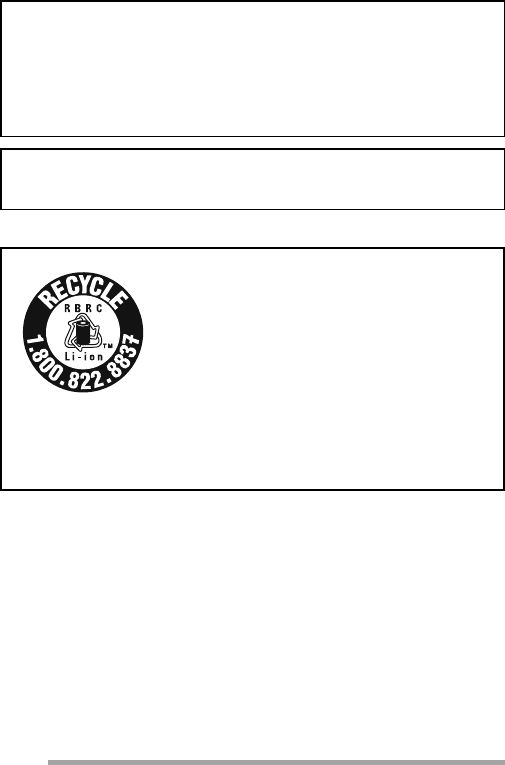
4
The AMBE+2TM voice coding Technology embodied in this product is protected
by intellectual property rights including patent rights, copyrights and trade
secrets of Digital Voice Systems, Inc. This voice coding Technology is
licensed solely for use within this Communications Equipment. The user of
this Technology is explicitly prohibited from attempting to extract, remove,
decompile, reverse engineer, or disassemble the Object Code, or in any other
way convert the Object Code into a human-readable form. U.S. Patent Nos.
#6,199,037, #6,912,495, #8,200,497, #7,970,606, and #8,359,197
Firmware Copyrights
The title to and ownership of copyrights for fi rmware embedded in KENWOOD
product memories are reserved for JVC KENWOOD Corporation.
ATTENTION:
The RBRC Recycle seal found on KENWOOD
lithium-ion (Li-ion) battery packs indicates
KENWOOD’s voluntary participation in an
industry program to collect and recycle
Li-ion batteries after their operating life has
expired. The RBRC program is an alternative
to disposing Li-ion batteries with your regular
refuse or in municipal waste streams, which is
illegal in some areas.
For information on Li-ion battery recycling in your area, call (toll free)
1-800-8-BATTERY (1-800-822-8837).
KENWOOD’s involvement in this program is part of our commitment to
preserve our environment and conserve our natural resources.
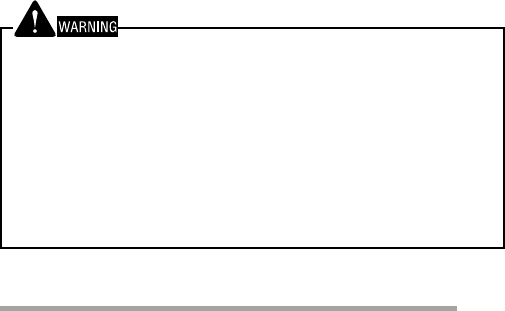
5
PRECAUTIONS
• Do not charge the transceiver and battery pack when they are wet.
• Ensure that there are no metallic items located between the
transceiver and the battery pack.
• Do not use options not specifi ed by KENWOOD.
• If the die-cast chassis or other transceiver part is damaged, do not
touch the damaged parts.
• If a headset or headphone is connected to the transceiver, reduce
the transceiver volume. Pay attention to the volume level when
turning the squelch off.
• Do not place the microphone cable around your neck while near
machinery that may catch the cable.
• Do not place the transceiver on unstable surfaces.
• Ensure that the end of the antenna does not touch your eyes.
• When the transceiver is used for transmission for many hours, the
radiator and chassis will become hot. Do not touch these locations
when replacing the battery pack.
• Do not immerse the transceiver in water.
• Always switch the transceiver power off before installing optional
accessories.
• The charger is the device that disconnects the unit from the AC
mains line. The AC plug should be readily accessible.
Turn the transceiver power off in the following locations:
• In explosive atmospheres (infl ammable gas, dust particles,
metallic powders, grain powders, etc.).
• While taking on fuel or while parked at gasoline service stations.
• Near explosives or blasting sites.
• In aircraft. (Any use of the transceiver must follow the
instructions and regulations provided by the airline crew.)
• Where restrictions or warnings are posted regarding the use of
radio devices, including but not limited to medical facilities.
• Near persons using pacemakers.

6
• Do not disassemble or modify the transceiver for any reason.
• Do not place the transceiver on or near airbag equipment while
the vehicle is running. When the airbag infl ates, the transceiver
may be ejected and strike the driver or passengers.
• Do not transmit while touching the antenna terminal or if
any metallic parts are exposed from the antenna covering.
Transmitting at such a time may result in a high-frequency burn.
• If an abnormal odor or smoke is detected coming from the
transceiver, switch the transceiver power off immediately,
remove the battery pack from the transceiver, and contact your
KENWOOD dealer.
• Use of the transceiver while you are driving may be against traffi c
laws. Please check and observe the vehicle regulations in your
area.
• Do not expose the transceiver to extremely hot or cold
conditions.
• Do not carry the battery pack (or battery case) with metal
objects, as they may short the battery terminals.
• Danger of explosion if the battery is incorrectly replaced; replace
only with the same type.
• When attaching a commercial strap to the transceiver, ensure
that the strap is durable. In addition, do not swing the transceiver
around by the strap; you may inadvertently strike and injure
another person with the transceiver.
• If a commercially available neck strap is used, take care not to
let the strap get caught on nearby machine.
• When operating the transceiver in areas where the air is dry,
it is easy to build up an electric charge (static electricity).
When using an earphone accessory in such conditions, it is
possible for the transceiver to send an electric shock through
the earphone and to your ear. We recommend you use only
a speaker/microphone in these conditions, to avoid electric
shocks.
• To dispose of batteries, be sure to comply with the laws and
regulations in your country or region.

7
Information concerning the battery pack:
The battery pack includes fl ammable objects such as organic
solvent. Mishandling may cause the battery to rupture
producing fl ames or extreme heat, deteriorate, or cause other
forms of damage to the battery. Please observe the following
prohibitive matters.
• Do not disassemble or reconstruct battery!
The battery pack has a safety function and protection circuit to avoid
danger. If they suffer serious damage, the battery may generate heat
or smoke, rupture, or burst into fl ame.
• Do not short-circuit the battery!
Do not join the + and – terminals using any form of metal (such as a
paper clip or wire). Do not carry or store the battery pack in containers
holding metal objects (such as wires, chain-necklaces or hairpins). If
the battery pack is short-circuited, excessive current will fl ow and the
battery may generate heat or smoke, rupture, or burst into fl ame. It
will also cause metal objects to heat up.
• Do not incinerate or apply heat to the battery!
If the insulator is melted, the gas release vent or safety function is
damaged, or the electrolyte is ignited, the battery may generate heat
or smoke, rupture, or burst into fl ame.
• Do not leave the battery near fi re, stoves, or other heat
generators (areas reaching over 80°C/ 176°F)!
If the polymer separator is melted due to high temperature, an
internal short-circuit may occur in the individual cells and the battery
may generate heat or smoke, rupture, or burst into fl ame.
• Do not immerse the battery in water or get it wet by other
means!
If the battery’s protection circuit is damaged, the battery may charge
at extreme current (or voltage) and an abnormal chemical reaction
may occur. The battery may generate heat or smoke, rupture, or
burst into fl ame.
• Do not charge the battery near fi re or under direct sunlight!
If the battery’s protection circuit is damaged, the battery may charge
at extreme current (or voltage) and an abnormal chemical reaction
may occur. The battery may generate heat or smoke, rupture, or
burst into fl ame.

8
• Use only the specifi ed charger and observe charging
requirements!
If the battery is charged in unspecifi ed conditions (under high
temperature over the regulated value, excessive high voltage or
current over regulated value, or with a remodeled charger), it may
overcharge or an abnormal chemical reaction may occur. The
battery may generate heat or smoke, rupture, or burst into fl ame.
• Do not pierce the battery with any object, strike it with an
instrument, or step on it!
This may break or deform the battery, causing a short-circuit. The
battery may generate heat or smoke, rupture, or burst into fl ame.
• Do not jar or throw the battery!
An impact may cause the battery to leak, generate heat or smoke,
rupture, and/or burst into fl ame. If the battery’s protection circuit
is damaged, the battery may charge at an abnormal current (or
voltage), and an abnormal chemical reaction may occur. The battery
may generate heat or smoke, rupture, or burst into fl ame.
• Do not use the battery pack if it is damaged in any way!
The battery may generate heat or smoke, rupture, or burst into
fl ame.
• Do not solder directly onto the battery!
If the insulator is melted or the gas release vent or safety function is
damaged, the battery may generate heat or smoke, rupture, or burst
into fl ame.
• Do not reverse the battery polarity (and terminals)!
When charging a reversed battery, an abnormal chemical reaction
may occur. In some cases, an unexpected large amount of current
may fl ow upon discharging. The battery may generate heat or
smoke, rupture, or burst into fl ame.
• Do not reverse-charge or reverse-connect the battery!
The battery pack has positive and negative poles. If the battery pack
does not smoothly connect with a charger or operating equipment,
do not force it; check the polarity of the battery. If the battery pack is
reverse-connected to the charger, it will be reverse-charged and an
abnormal chemical reaction may occur. The battery may generate
heat or smoke, rupture, or burst into fl ame.
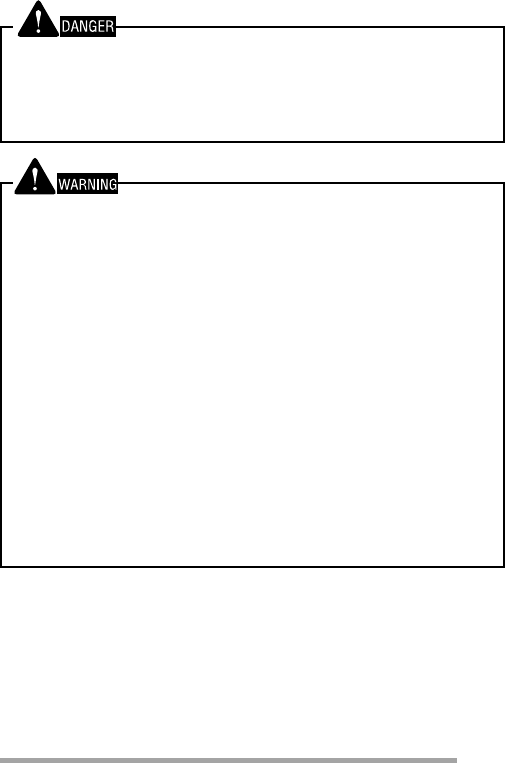
9
• Do not touch a ruptured and leaking battery!
If the electrolyte liquid from the battery gets into your eyes, wash
your eyes with fresh water as soon as possible, without rubbing your
eyes. Go to the hospital immediately. If left untreated, it may cause
eye-problems.
• Do not charge the battery for longer than the specifi ed
time!
If the battery pack has not fi nished charging even after the regulated
time has passed, stop it. The battery may generate heat or smoke,
rupture, or burst into fl ame.
• Do not place the battery pack into a microwave or high
pressure container!
The battery may generate heat or smoke, rupture, or burst into
fl ame.
• Keep ruptured and leaking battery packs away from fi re!
If the battery pack is leaking (or the battery emits a bad odor),
immediately remove it from fl ammable areas. Electrolyte leaking
from battery can easily catch on fi re and may cause the battery to
generate smoke or burst into fl ame.
• Do not use an abnormal battery!
If the battery pack emits a bad odor, appears to have different
coloring, is deformed, or seems abnormal for any other reason,
remove it from the charger or operating equipment and do not use
it. The battery may generate heat or smoke, rupture, or burst into
fl ame.
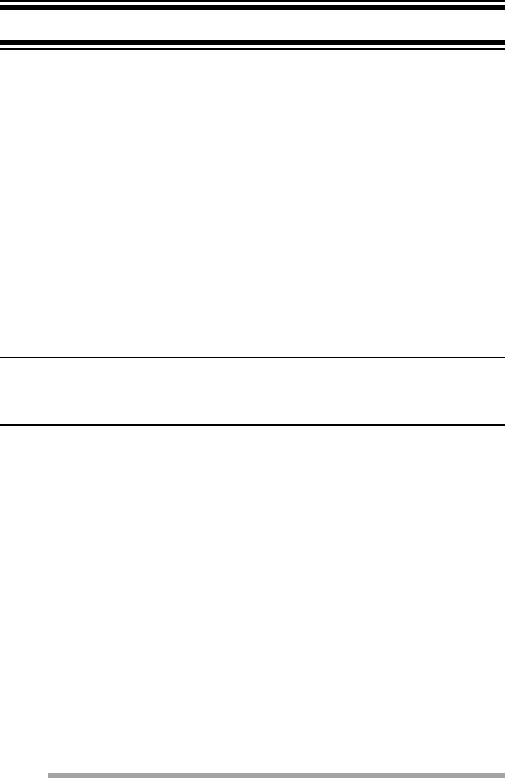
10
UNPACKING AND CHECKING EQUIPMENT
Carefully unpack the transceiver. If any of the items listed
below are missing or damaged, fi le a claim with the carrier
immediately.
SUPPLIED ACCESSORIES
• Antenna ..................................................................................1
• Battery charger/ AC adapter (KSC-35S) ................................1
• Li-ion Battery pack (KNB-45L) ................................................1
• Speaker/ microphone jack cover ............................................1
• Speaker/ microphone locking bracket .....................................1
• Belt clip (KBH-10) ...................................................................1
• Screw (M3 x 8 mm) ................................................................2
• Channel stopper .....................................................................1
• Instruction manual ..................................................................1
Note:
◆Refer to “PREPARATION” starting on page 11 for accessory
installation instructions.
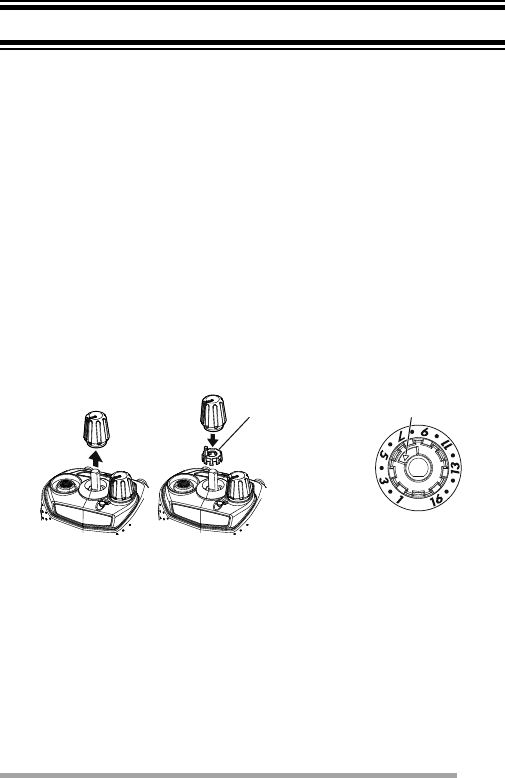
11
PREPARATION
INSTALLING THE CHANNEL STOPPER
You can set the channel stopper position for channels 2, 4,
6, 8, 10, 12, and 14. Inserting the Channel stopper prevents
unnecessarily selecting channels which do not exist.
• Selecting a channel which does not exist causes a continuous error
tone to sound.
1 Set the Channel selector to channel 1, then pull the Channel
selector knob off the transceiver.
• If the Channel selector is not positioned at channel 1, the knob may
not install correctly and the channel may be unable to change.
2 Insert the channel stopper.
3 Set the arrow of the Channel stopper to the highest channel
number for the transceiver.
4 Reinsert the Channel selector knob.
Channel stopper Arrow
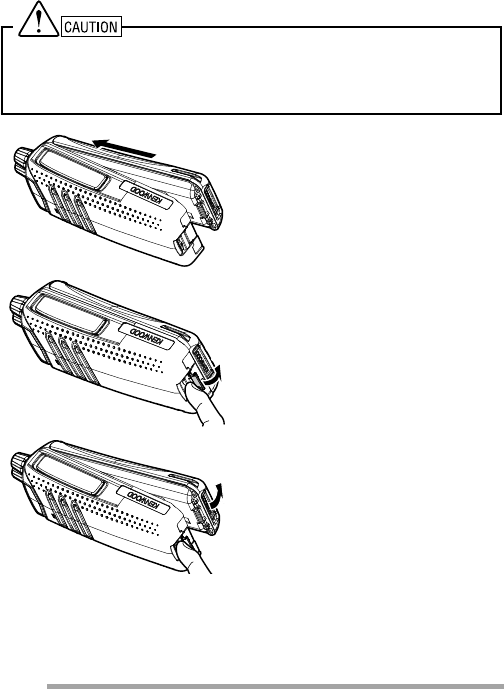
12
INSTALLING/ REMOVING THE BATTERY PACK
The battery pack is not charged at the factory; charge it before
use.
◆Do not short the battery terminals or dispose of the battery by
fi re.
◆Never attempt to remove the casing from the battery pack.
1 Align the battery pack with
the back of the transceiver,
then press the battery pack
and transceiver fi rmly together
until the release latch on the
base of the transceiver locks.
2 To remove the battery pack, lift
the safety catch on the base
of the transceiver, then press
the release latch underneath
the safety catch.
3 While pressing the release
latch, pull the battery pack
away from the transceiver.

13
CHARGING THE BATTERY PACK
ATTENTION:
◆Always switch OFF a transceiver equipped with a battery pack
before inserting the transceiver into the charger.
1 Plug the AC adapter cable into the jack located on the rear
of the charger.
2 Plug the AC adapter into an AC outlet.
3 Slide a battery pack or a transceiver equipped with a battery
pack into the charging slot of the charger.
• Make sure the metal contacts of the battery pack mate securely
with the charger terminals.
• The indicator lights red and charging begins.
Indicator
4 When charging is completed, the indicator lights green.
Remove the battery pack or the transceiver from the
charging slot of the charger.
• It takes approximately 3 hours to charge the battery pack.
• When the charger will not be used for a long time, unplug the AC
adapter from the AC outlet.
Note:
◆ When the indicator blinks red, the battery pack is either
defective or the battery pack contacts are not properly mated
with those of the charger.
◆ When the indicator fl ashes green and orange, the battery pack
has not satisfi ed the charging start temperature. Remove the
battery pack from the charger and wait until it reaches a normal
temperature before charging it again.
◆ The ambient temperature should be between 41°F and 104°F
(5°C and 40°C) while charging is in progress. Charging outside
this range may not fully charge the battery.

14
◆ The battery pack life is over when its operating time decreases even
though it is fully and correctly charged. Replace the battery pack.
INSTALLING THE ANTENNA
Antenna Screw the antenna into the connector on
the top of the transceiver by holding the
antenna at its base and turning it clockwise
until secure.
Note:
◆The antenna is neither a handle, a key
ring retainer, nor a speaker/ microphone
attachment point. Using the antenna in these
ways may damage the antenna and degrade
your transceiver’s performance. la fi xer
correctement en place.
INSTALLING THE BELT CLIP
Belt clip
If necessary, attach the belt clip
using the two supplied M3 x 8 mm
screws.
Note:
◆If the belt clip is not installed, its
mounting location may get hot during
continuous transmission or when left
sitting in a hot environment.
◆Do not use glue which is designed to prevent screw loosening
when installing the belt clip, as it may cause damage to the
transceiver. Acrylic ester, which is contained in these glues,
may crack the transceiver’s back panel.

15
INSTALLING THE CAP OVER THE SPEAKER/
MICROPHONE JACKS
Install the cap over the speaker/ microphone jacks when not
using an optional speaker/ microphone or headset.
Note:
◆To keep the transceiver water resistant, you must cover the speaker/
microphone jacks with the supplied cap.
1 Insert the speaker/ microphone (or
headset) plugs into the speaker/
microphone jacks of the transceiver.
2 Place the locking bracket over the
speaker/ microphone (or headset)
plugs so that the locking tabs insert
into the transceiver grooves.
• Push down on the locking bracket to
slide it into place.
3 While holding the locking bracket in
place, push it towards the bottom of
the transceiver until the tabs on the
bracket click into place.
• To remove the locking bracket, push
the bracket up from the base.
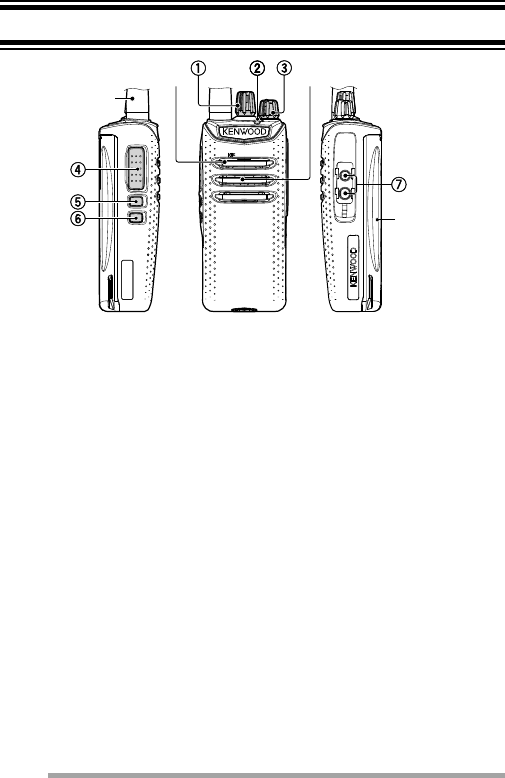
16
ORIENTATION
Battery pack
Antenna
Microphone Speaker
a Selector
Rotate to change the operating channel.
b LED indicator
For the LED indicator status, refer to page 18.
c Power switch/ Volume control
Turn clockwise to switch ON the transceiver. To switch OFF
the transceiver, turn counterclockwise until a click sounds.
Rotate to adjust the volume level.
d PTT (Push to Talk) switch
Press and hold, then speak into the microphone to transmit.
e Side 1 key
Press to activate its programmable function.
f Side 2 key
Press to activate its programmable function.
g Speaker/ microphone jacks
Insert the Speaker/ microphone or Headset plug into this jack.

17
BASIC OPERATIONS
SWITCHING POWER ON/OFF
Turn the Power switch/ Volume control clockwise to switch the
transceiver ON.
Turn the Power switch/ Volume control counterclockwise fully
to switch the transceiver OFF.
ADJUSTING THE VOLUME
Rotate the Power switch/ Volume control to adjust the volume.
Clockwise increases the volume and counterclockwise
decreases it.
SELECTING A ZONE AND CHANNEL
1 Select the desired zone using the key programmed as
[Zone Up] or [Zone Down].
• Each zone contains a group of channels.
2 Select the desired channel using the Selector knob
(default).
• Each channel is programmed with settings for transmitting and
receiving.
TRANSMITTING
1 Select the desired zone and channel.
2 Press the key programmed as [Monitor] or [Squelch Off] to
check whether or not the channel is free.
• If the channel is busy, wait until it becomes free.
3 Press the PTT switch and speak into the microphone.
Release the PTT switch to receive.
• For best sound quality, hold the transceiver approximately
1.5 inches (3 ~ 4 cm) from your mouth.

18
RECEIVING
Select the desired zone and channel. If signaling has been
programmed on the selected channel, you will hear a call only
if the received signal matches your transceiver settings.
Receiving Group Calls
When you receive a group call and the received group ID
matches the ID set up on your transceiver, you can hear the
caller’s voice.
Receiving Individual Calls
When you receive an individual call, a ringing tone will sound
and the caller’s ID will appear on the display. To respond to
the call, press and hold the PTT switch and speak into the
transceiver as you would during a normal transmission.
LED INDICATOR STATUS
Indicator Color Meaning
Lights red Transmitting
Lights green Receiving a call
Blinks red Battery power is low while transmitting
Blinks green Scanning
Blinks orange
or blue * Receiving an encoded call (signaling, etc.)
Blinks red/orange The selected channel has not been
programmed and cannot be used.
* Your dealer can set the LED to blink either orange or blue for
Transceiver operation.

© 2015
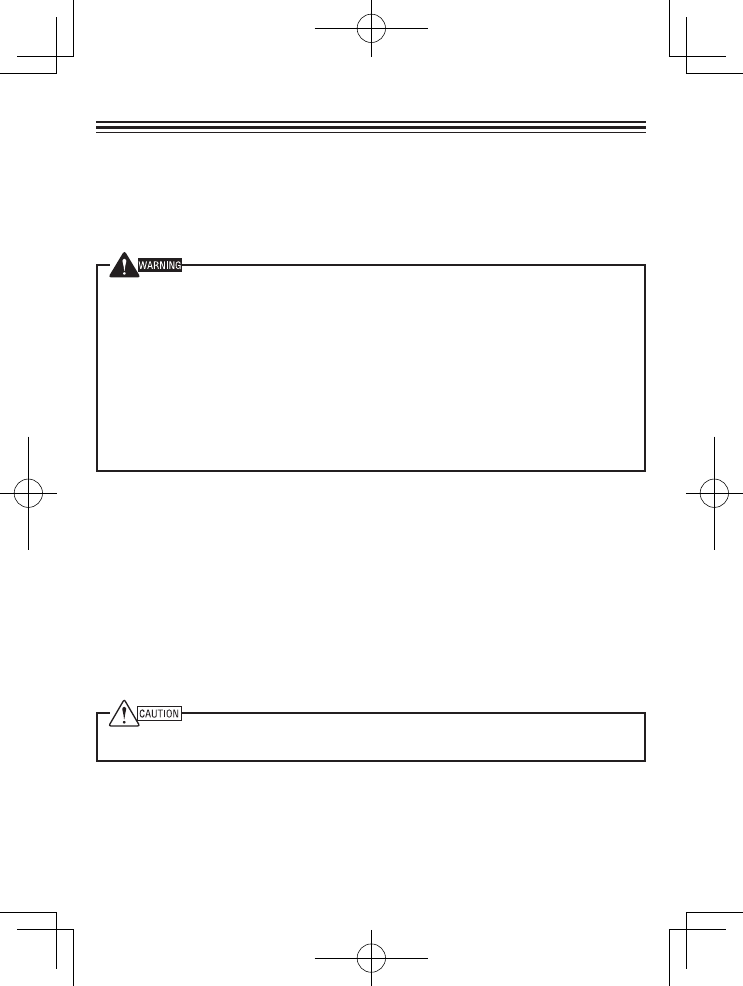
RADIO FREQUENCY ENERGY SAFETY INFORMATION
This KENWOOD transceiver has been tested and complies with the standards listed below, in regards
to Radio Frequency (RF) energy and electromagnetic energy (EME) generated by the transceiver.
• FCC RF exposure limits for
Occupational Use Only
. RF Exposure limits adopted by the FCC are generally
based on recommendations from the National Council on Radiation Protection and Measurements, & the
American National Standards Institute.
• FCC OET Bulletin 65 Edition 97-01 Supplement C
• American National Standards Institute (C95.1 – 1992)
• American National Standards Institute (C95.3 – 1992)
This KENWOOD transceiver generates RF EME while transmitting. RF EME (Radio Frequency Electric &
Magnetic Energy) has the potential to cause slight thermal, or heating effects to any part of your body less
than the recommended distance from this radio transmitter’s antenna. RF energy exposure is determined
primarily by the distance to and the power of the transmitting device. In general, RF exposure is minimized
when the lowest possible power is used or transmission time is kept to the minimum required for consistent
communications, and the greatest distance possible from the antenna to the body is maintained. The
transceiver has been designed for and is classified for
Occupational Use Only
. Occupational/ controlled
exposure limits are applicable to situations in which persons are exposed to RF energy as a consequence
of their employment, and such persons have been made aware of the potential for exposure and can
exercise control over their exposure. This means you can use the transceiver only if you are aware of
the potential hazards of operating a transceiver and are familiar in ways to minimize these hazards. This
transceiver is not intended for use by the general public in uncontrolled environments. Uncontrolled
environment exposure limits are applicable to situations in which the general public may be exposed to RF
energy, or in which the persons who are exposed as a consequence of their employment may not be fully
aware of the potential for exposure or cannot exercise control over their exposure.
The following list provides you with the information required to ensure that you are aware of RF
exposure and of how to operate this transceiver so that the FCC RF exposure limitations are not
exceeded.
• While transmitting (holding the PTT switch or speaking with VOX enabled), always keep the antenna
and the radio at least 3 cm (1 3/16 inches) from your body or face, as well as from any bystanders. A
LED on the top of the radio shows red when the transmitter is operating in both PTT and VOX modes.
• Do not transmit for more than 50% of the total transceiver use time; transmitting over 50% of the total use
time may exceed the limits in accordance to the FCC RF exposure requirements. Nominal transceiver
operation is 5% transmission time, 5% reception time, and 90% stand-by time.
• Use only the specified antenna for this transceiver; this may be either the antenna provided with the
transceiver or another antenna authorized by KENWOOD.
Use only KENWOOD authorized accessories (antennas, battery packs, belt clips, Speaker/ Mics
or headsets etc.): When worn on the body, always place the radio in a KENWOOD recommended
clip or carrying case meant for this product. The use of other than recommended or approved
body- worn accessories may result in RF exposure levels which exceed the FCC’s occupational/
controlled environment RF exposure limits.
To ensure that your exposure to RF EME is within the FCC limits for occupational use, you must
observe and adhere to the above points.
Electromagnetic Interference Compatibility
Electronic devices are susceptible to electromagnetic interference (EMI) if they are not adequately
shielded or designed for electromagnetic compatibility. Because this transceiver generates RF
energy, it can cause interference to such equipment.
• Turn OFF your transceiver where signs are posted to do so. Hospitals and health care facilities use
equipment that is sensitive to electromagnetic radiation.
• Turn OFF your transceiver while on board an aircraft when so instructed. Use of the transceiver must
be in accordance with airline regulations and/or crew instructions. B59-2687-00